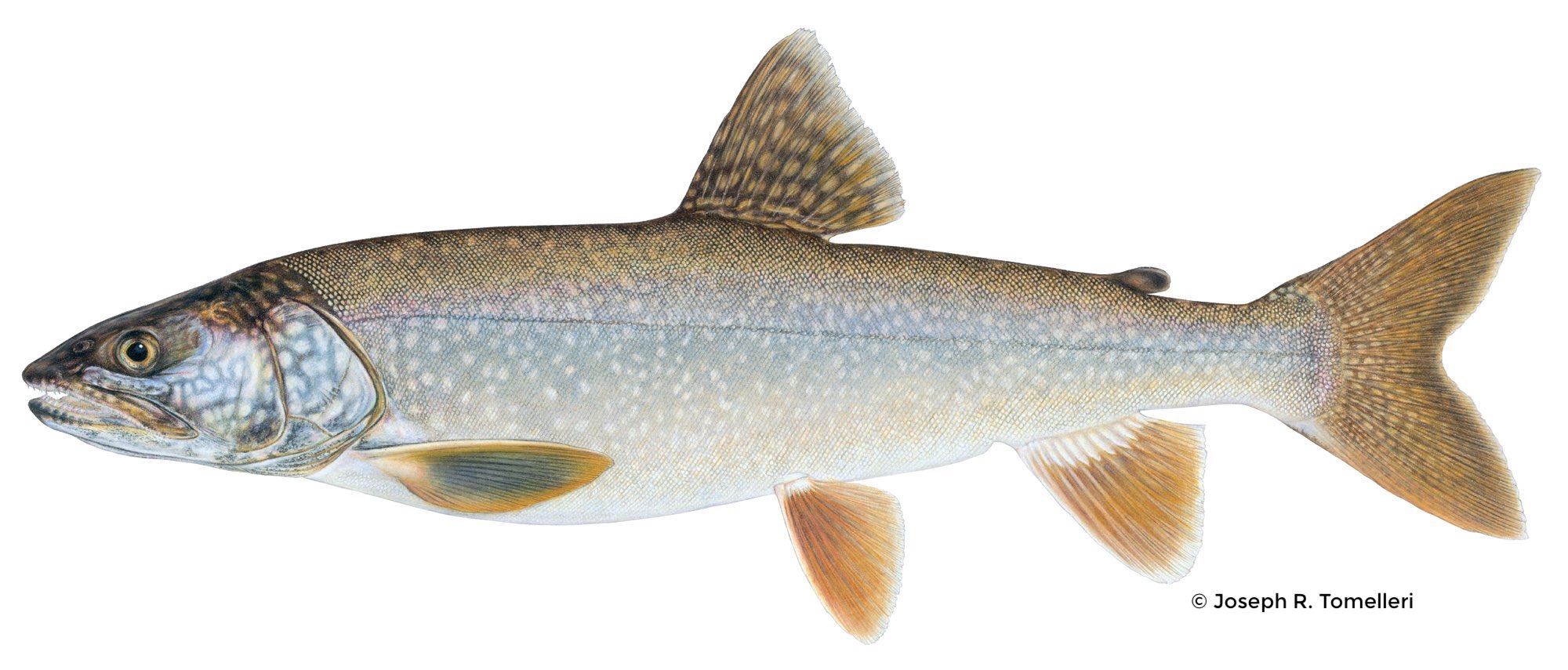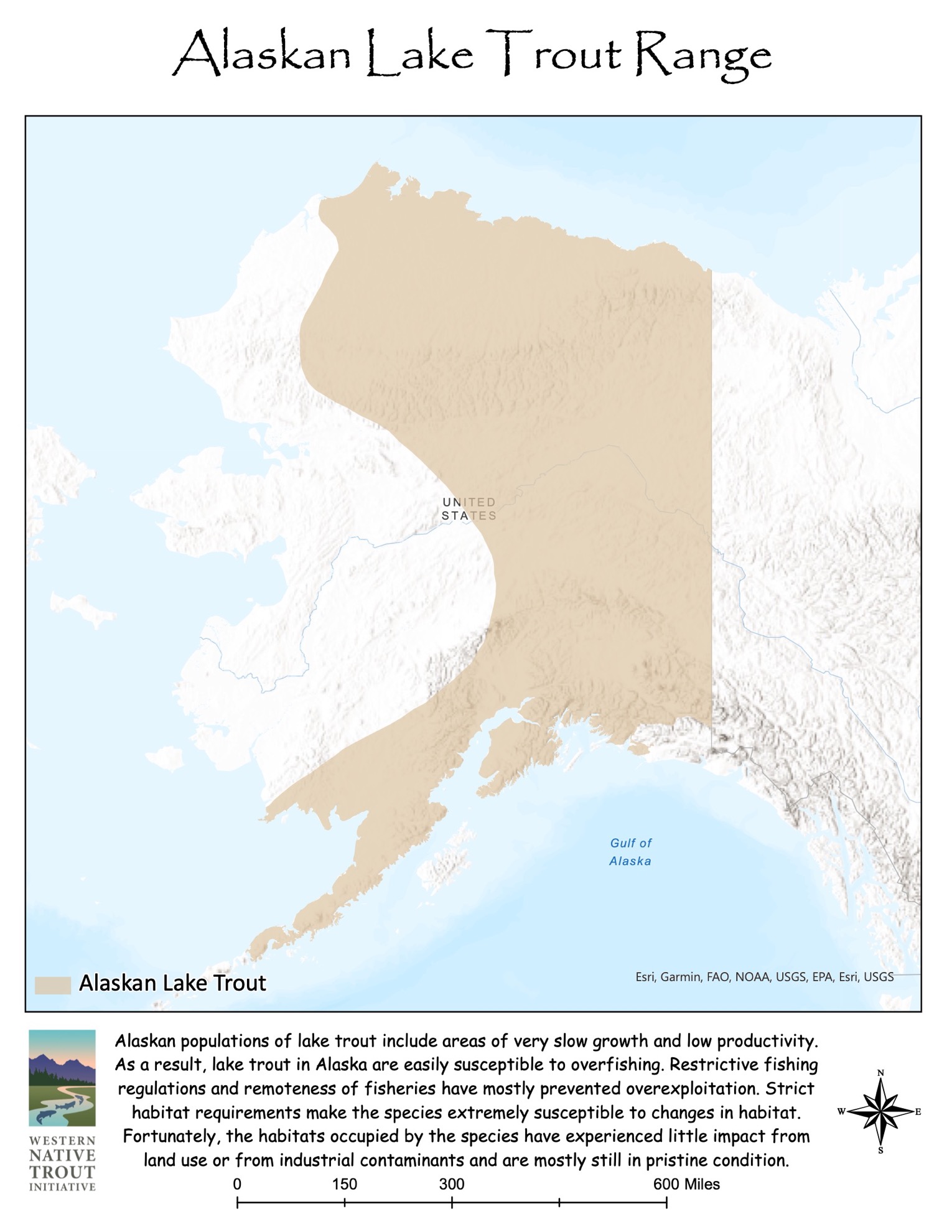
As the largest freshwater fish in Alaska, Lake Trout support important recreational fisheries in roadside and remote lake systems. The life history of Lake Trout, however, allows this species to be over-exploited when not managed conservatively. Lake Trout have slow growth rates, low fecundity, alternate-year spawning regimes, strict habitat requirements (cold, deep, oligotrophic lakes with a sufficient prey base and few competitors) and are extremely susceptibility to changes in habitat. In Alaska, careful monitoring of stock status, exploitation, and habitat is critical to help manage Lake Trout fisheries.
The distribution of Lake Trout in Alaska represents the northern and western edge of their native range in North America. Lake Trout are found in high elevation lakes of the Brooks Range, the Arctic coastal plain, the Upper Tanana, Susitna, and Copper River drainages, and in the Bristol Bay and Kenai Peninsula areas. A cold, deep, oligotrophic lake with sufficient prey and few competitors is an ideal habitat for Lake Trout in Alaska. Self-sustaining populations also exist in turbid glacial lakes (e.g., Kenai Klutina, and Tazlina Lakes), although these lakes do not provide ideal habitat, and the fish tend to have smaller maximum sizes compared to fish in clearer lakes.
Lake Trout support important recreational fisheries in Alaska roadside and remote lake systems, particularly in headwater lakes of the Copper and Susitna River drainages. Sport fishing for Lake Trout is popular throughout the year, with some of the best fishing occurring through the ice. Since 2013, an average of 84% of the Lake Trout captured in the sport fishery are released, due in part to both conservative fishing regulations and anglers’ desire to catch and release large fish.
Listen to this U.S. Fish and Wildlife Service Fish of the Week podcast about Lake Trout, with Jared Stone a biologist with the Office of Subsistence Management in Alaska (February 15, 2021).

